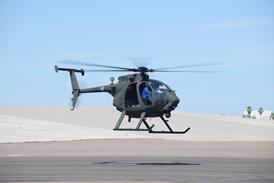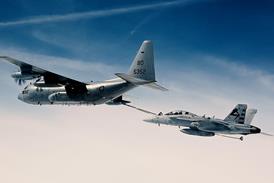THE Global Hawk reconnaissance unmanned air vehicle has flown for a second time at Edwards AFB, California, performing what the company describes as a "text book" mission lasting 2h 24min.
The aircraft reached 41,000ft (12,500m) during the sortie, which also included the successful hand-off of command and control via satellite from Edwards to San Diego and back again. "This clearly demonstrated the worldwide connectivity of the system. The fact the hand-over was made via satellite means this could have been controlled from anywhere," says Teledyne Ryan, prime contractor for the Global Hawk.
The UHF satellite communications link between the aircraft and the ground was transferred for 16min from the launch and recovery element at Edwards to the mission control element at the company's San Diego plant.
The company says problems which caused the curtailment of the first flight on 28 February have now been fixed. These included misaligned rigging of the undercarriage, which prevented it from locking in the up position, and lower than anticipated temperatures in one of the pressurised compartments which normally will house the vehicle's heat-generating avionics.
The third flight is tentatively due around the end of this month and will be aimed at further expansion of the flight envelope to 50,000ft and an endurance of 4h. The ultimate goal will be reached with flights of between 32h and 40h and heights of 65,000ft.
The Global Hawk demonstrated "excellent flight characteristics, precise guidance, and accurate altitude and velocity control" during the autonomous flight, adds Teledyne Ryan.
Meanwhile, engine test runs on the second Allison AE3007-powered Global Hawk have begun in San Diego. This aircraft is due to perform the bulk of the payload testing and sensors "-will soon be integrated into the airframe" before flight testing.
Source: Flight International























